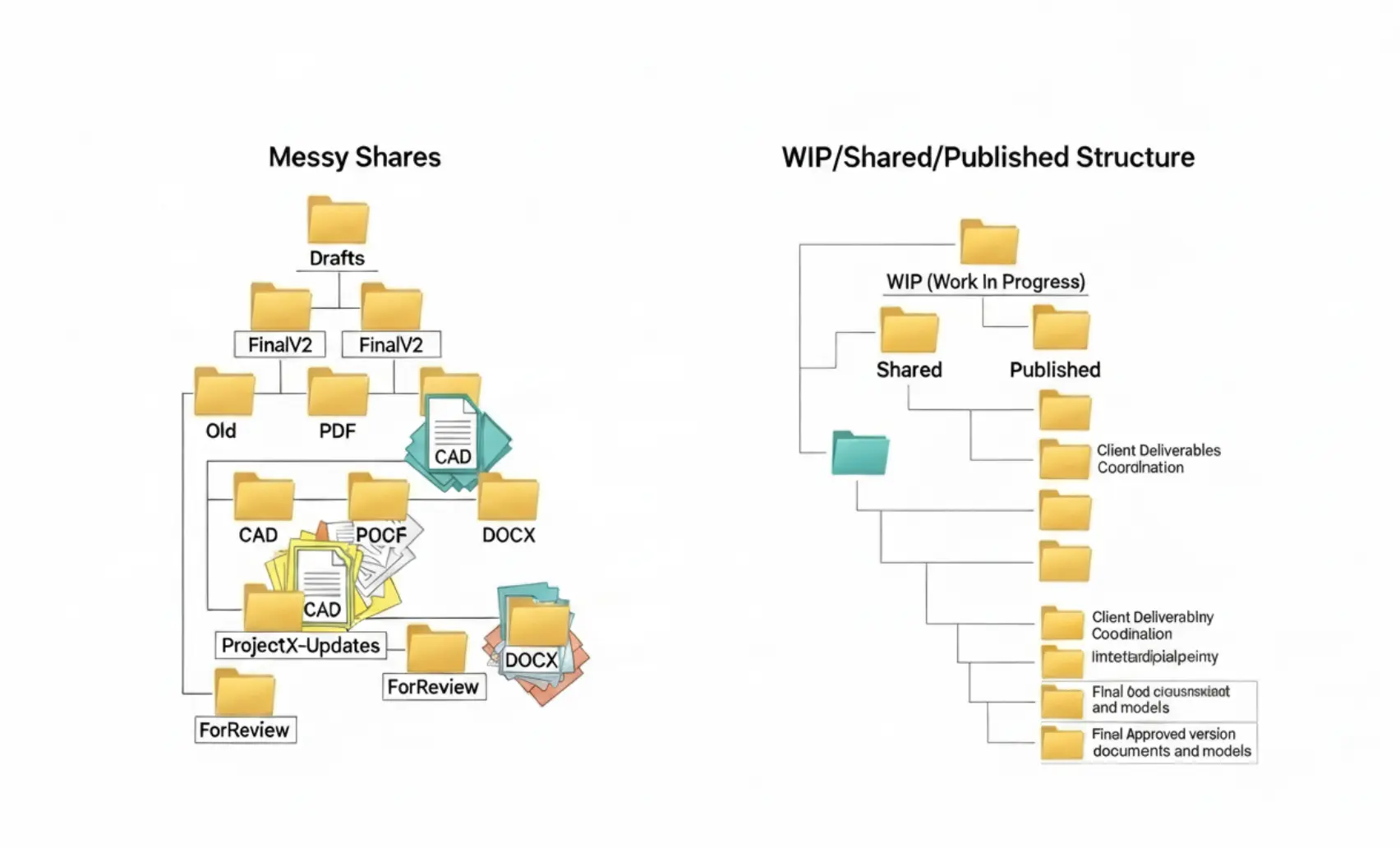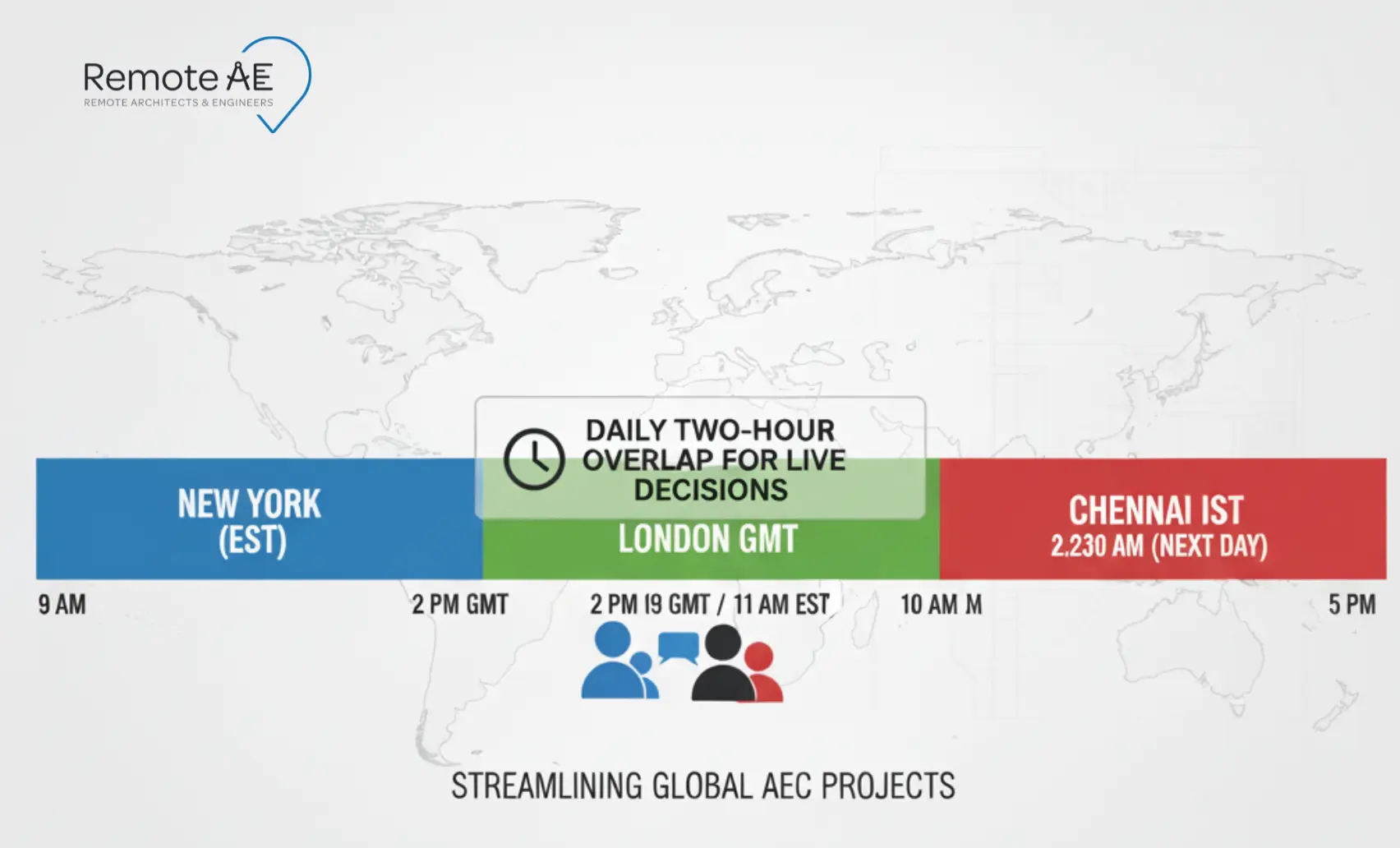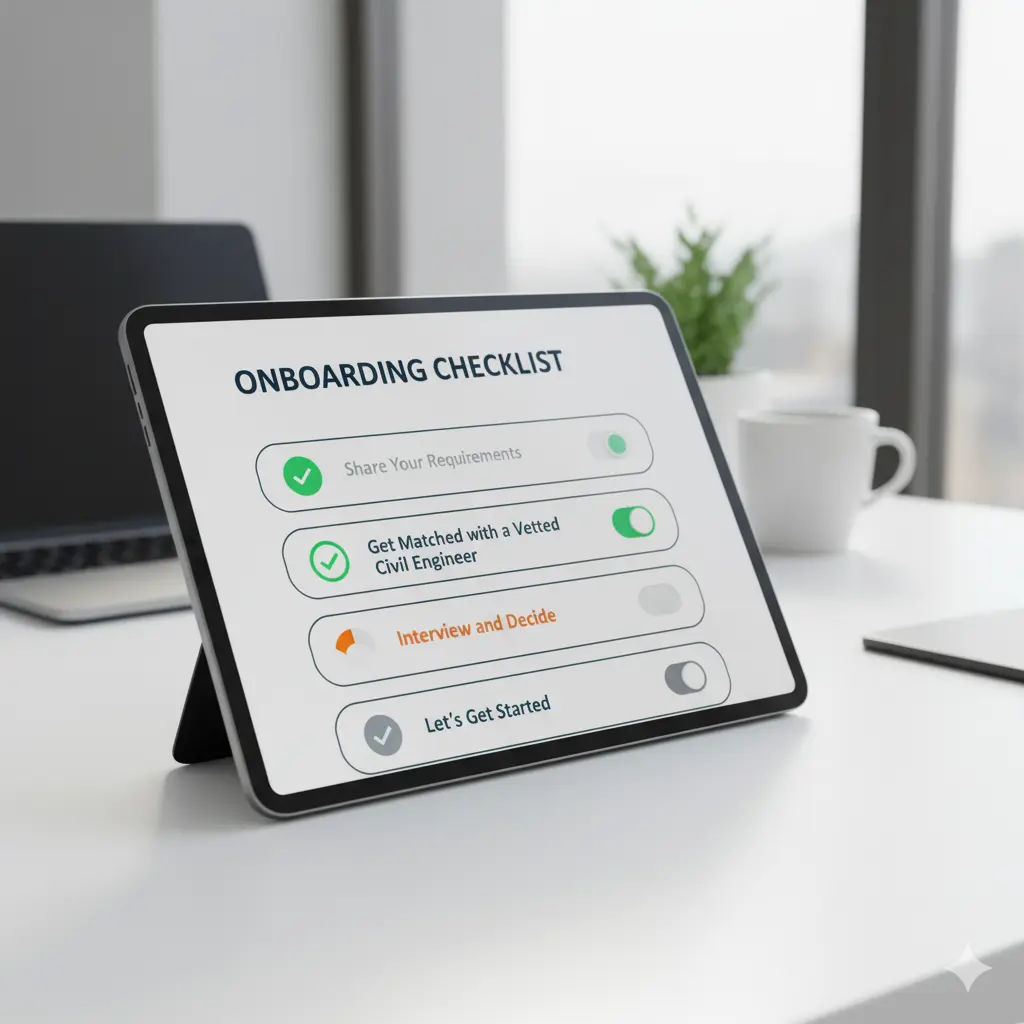
Outsourcing can slash costs and speed delivery, but only when you run it with a clear scope, the right skills, and tight QA. Many AEC firms lose time to poor data, rework, and slow handoffs, ~35% of weekly hours by some measures (Autodesk + FMI). At the same time, in AGC’s 2024 survey, 94% of firms with craft openings struggled to fill them, and 54% said shortages caused project delays.
This article names the eight mistakes that derail AEC outsourcing and shows how to set scope, standards, and KPIs that actually work. You’ll receive a fast setup checklist and a path to a reliable virtual construction assistant or production team, without compromising quality.
Firms turn to outsourcing for four reasons: cost reduction, talent shortages, project scalability, and faster turnaround across time zones. When managed well, offshore or nearshore teams keep drawing sets, RFIs, and models moving while your local crew sleeps. That matters when non-productive time and hiring gaps are rising across the industry.
What good looks like
According to industry studies and market forecasts, the global outsourcing sector is projected to grow at a compound annual growth rate (CAGR) of 5.54% between 2020 and 2027, reaching an estimated market value of around USD 1.11 trillion by 2023.
This flexible model has become an operational necessity for firms using Autodesk Construction Cloud or Revit-based workflows. But outsourcing success depends on structure, and that’s where many firms fall short.

AEC outsourcing isn’t just a labor exchange; it’s a contracted extension of your design and documentation process. When firms treat it as a quick fix instead of a structured partnership, projects start slipping.
Here’s the pattern. A studio hands a vendor a folder of mixed files and a vague deadline. No template, no view standards, no CDE path, no KPIs. Two weeks later, the sheets come back off-standard. Rework spikes. The budget wobbles. Studies tie poor information management to lost time and extra cost; teams report 13–14 hours/week spent just searching or fixing mistakes.
This kind of failure isn’t uncommon. It usually stems from:
When the fundamentals are ignored, the standard of care and liability boundaries blur, especially across project delivery methods like DBB, CMAR, or Design-Build. The lesson? AEC outsourcing only works when governance and technical structure are aligned from day one.

Outsourcing in architecture, engineering, and construction offers major efficiency gains; however, only when structured correctly. Here are the eight most common AEC outsourcing pitfalls that lead to rework, miscommunication, and missed deadlines.
Unclear requirements cause design errors and wasted effort. Many firms skip defining material specifications, model hierarchy, and Level of Detail (LOD) expectations. Without a structured BIM Execution Plan (BEP) or deliverable checklist, teams misinterpret scope and produce inconsistent work.
Avoid it:
Outsourcing fails when task assignments don’t match skill sets. A Revit architecture modeler may not have structural or MEP expertise. Misaligned technical roles often lead to coordination issues, especially on projects with multiple disciplines.
Avoid it:
Dodge research links coordinated BIM skills to fewer RFIs and smoother delivery.
No QC = noisy sets. AEC work demands precision. Without consistent QA/QC systems, outsourced deliverables may not meet compliance or design intent. Skipping audits, checklists, or peer reviews increases rework and timeline extensions.
Avoid it:
Silence kills progress. If questions sit in inboxes, days vanish. When there’s no clear feedback cycle or project channel, small issues snowball into major problems. Continuous updates and structured feedback cycles are essential for smooth collaboration.
Avoid it:
Unsecured file transfers and poorly managed access controls expose firms to data risks. Sharing Revit models, drawings, or client details without NDAs or secure platforms compromises intellectual property and confidentiality.
Avoid it:
Low-cost vendors often cut corners on QA, experience, or reliability. Price-focused decisions usually result in low-quality outputs and missed deadlines. The best outsourcing partnerships balance cost with long-term quality and accountability. BIM research ties coordinated methods to fewer RFIs and less rework; quality beats bargain bids (Dodge Data & Analytics).
Avoid it:
If you can’t measure it, you can’t improve it. Non-productive time already eats ~35% of weekly hours; tracking stops the bleed (Autodesk Construction stats). Firms need KPIs like turnaround time, clash detection accuracy, and communication response rates to maintain accountability and consistency.
Avoid it:
Asynchronous is great, until you need a quick decision. Without planned overlap windows or asynchronous workflows, questions remain unresolved, leading to stalled progress and misaligned deliverables.
Avoid it:
When outsourcing fails, it’s rarely due to lack of talent; it’s a failure of setup. A strong MSA, clear BEP, structured QA process, and secure CDE are the foundation of successful AEC partnerships.

Many AEC outsourcing issues stem from weak setups, not bad partners. Success depends on structure, expectations, and systems that keep projects aligned from day one. Here’s a checklist to make outsourcing work reliably.
Evaluate vendors on:
Start with a small test project before scaling. The pilot should include:
This minimizes risk and reveals gaps in skill alignment early.
Provide every vendor with:
A strong Master Services Agreement (MSA) defines scope, billing, liability, and confidentiality.
Also include:
Treat outsourced deliverables as extensions of your own team’s output.
A structured outsourcing setup prevents errors and builds predictable, repeatable collaboration across projects.
Firms that outsource successfully share a common factor: they work with experienced partners who understand not only staffing but also AEC standards, such as Remote AE.
Remote AE specializes in architecture, engineering, and construction outsourcing. Our teams include Revit drafters, BIM coordinators, virtual engineering assistants, and project assistants, all trained on ISO 19650, BEP execution, and LOD standards.
Every professional we assign is vetted for technical accuracy, communication skills, and tool proficiency. They’re fluent in Revit, Navisworks, and Autodesk Construction Cloud, delivering drawings, 3D models, and construction documentation that meet international quality expectations.
We operate under strict confidentiality frameworks: NDAs, data residency compliance, and controlled-access systems. Clients gain the benefit of offshore scalability without risking intellectual property or client data.
Our performance tracking model combines:
Start with a single assistant for document control, or a small pod (assistant + coordinator). Add specialized drafter/modeler capacity when packages spike. This is construction industries outsourcing that feels in-house: same tools, same templates, your PM in charge.
Remote AE isn’t a vendor; we act as an AEC extension of your firm.

Avoiding outsourcing pitfalls starts with the right partner. At Remote AE, we help AEC firms build reliable offshore teams that deliver precision, consistency, and measurable results. Stop letting outsourcing mistakes drain time and budget. Build your remote AEC team with trusted professionals who understand architecture, engineering, and construction standards inside out. Contact Remote AE to discuss your staffing needs and start your next project with confidence.
It should define IP ownership, NDAs, SLAs, rework terms, data security, and standard of care. Also include clauses for jurisdiction, confidentiality, and deliverable approval to protect both sides.
Common challenges include communication delays, quality control gaps, unclear deliverables, and cultural misalignment.
The top causes are unclear expectations and poorly defined scopes. Without measurable SLAs and QA rules, revisions and disputes become frequent.
Studies show 30–50% of outsourcing relationships fail or underperform within two years, mainly due to a lack of governance, weak onboarding, or unmanaged handoffs.
Use a local review loop: offshore teams draft under international or U.S. baseline codes (IBC, NEC, ASHRAE), then a licensed local reviewer signs off for jurisdiction-specific compliance.
Other articles you may like: